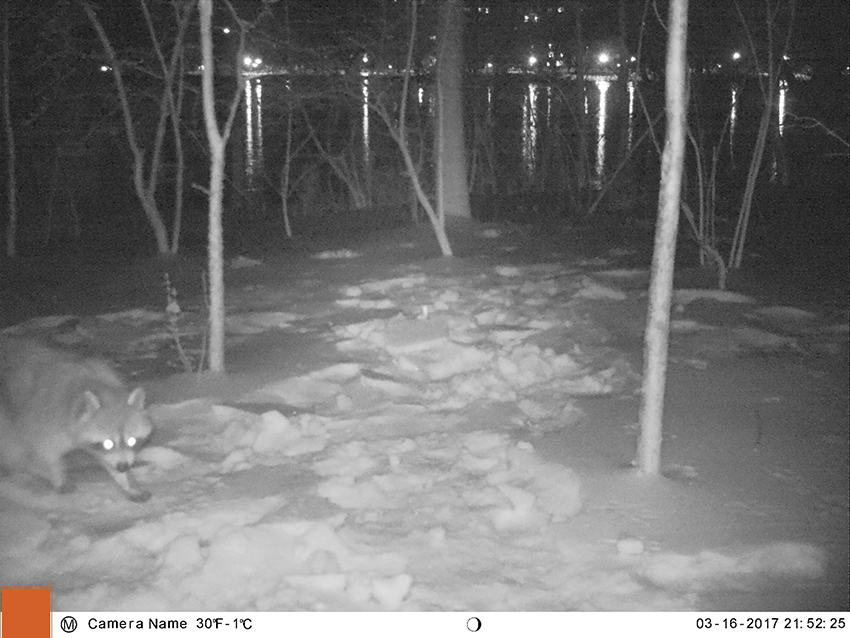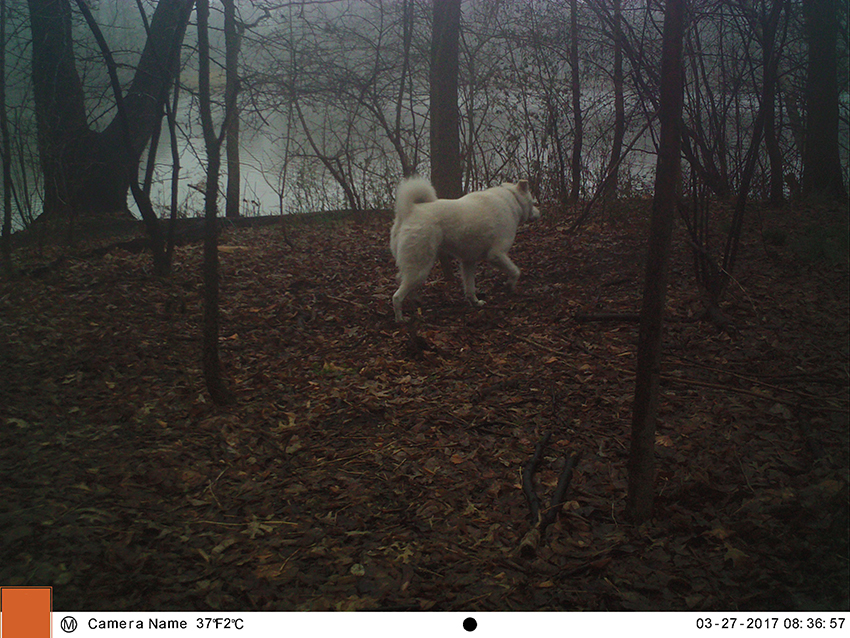
Pratt Institute recently welcomed wildlife biologist Dr. Roland Kays, who is research associate professor at North Carolina State University and director of the Biodiversity and Earth Observation Lab at the North Carolina Museum of Natural Sciences, to the Brooklyn campus for “Candid Creatures,” a lecture and workshop that gave Pratt students a chance to explore how photography relates to science and wildlife conservation.
The visit, which was organized by Christopher Jensen, associate professor of math and science, and Andrew Todd, visiting assistant professor of photography, offered an interdisciplinary perspective on techniques and uses of photography. The programming centered on the applications of camera traps for conservation biology, the subject of Kays’s recent book, Candid Creatures: How Camera Traps Reveal the Mysteries of Nature. Kays’s research focuses on the use of camera traps to provide raw scientific data to assess the sizes of vulnerable wildlife populations, as well as to collect images that motivate the public to invest in conservation.
At the hands-on workshop, Kays gave students from different disciplines a chance to familiarize themselves with a range of tools and technologies related to camera trap photography. The camera traps he discussed use infrared sensors to detect motion, and can operate without flash. Collecting images without the risk of startling animals with flash is important, as it allows for the documentation of “normal” wildlife activity.
Kays, Jensen, Todd, and the students examined images from two camera traps that had been set up for the workshop on the Brooklyn campus and in nearby Prospect Park. Images included dogs, pigeons, squirrels, and raccoons. The group also sorted through images captured by Kays’s camera traps in Kenya and practiced identifying and tagging wildlife found in them, turning imagery into online data that can be shared with citizens and scientists around the globe and used to measure population size, wildlife activity patterns, and more.

“Dr Kays’s visit was a terrific example of the benefits of having a guest speaker come to campus who is ‘non-traditional’ in that he is not directly working in the art field,” said Todd. “It gave students an important perspective on how camera trapping technologies are applied in a scientific capacity and also provided them with information and inspiration on how this unique technology could be adapted and used from an artistic perspective.”
Uma Sharma (M.F.A. Digital Arts ’17), who attended the workshop, was intrigued by the creative potential of camera trap images. “In a camera trap, a series of three-to-four pictures capture the location, the mood, and the animal’s behavior, and ultimately open up the viewer’s mind to the possibilities of creating an open-ended narrative around these pictures,” she said. “It was a great session, and I look forward to seeing what future possibilities might come out in my work using a camera trap as a medium.”
For his talk, which was open to the Pratt community and the public, Kays explained how photography is used for data collection to understand the behavior of wild animals, as well as for advocacy work in conservation biology. He discussed “citizen science,” or research conducted by amateur scientists; crowdsourcing imagery to collect data; and the importance of archiving imagery and data so that more people can make use of it, which can stimulate public interest in conservation.
“It is nice when you have a speaker who can compel students to think more broadly about their creative medium,” said Jensen. “The images that Dr. Kays captures obviously have a primary purpose as scientific data, but they also can be understood as providing a perspective on nature that even professional nature photographers don’t usually take,” he added.
“Candid Creatures” was sponsored by Pratt’s Academic Senate and took place during Pratt’s Green Week 2017 celebration at the end of March.
Images: Photos from “Candid Creatures” workshop camera trap in Prospect Park, Brooklyn